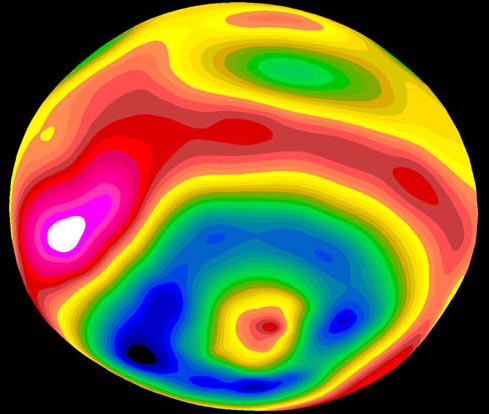Explanation: Vesta is a huge rock 500 kilometers across that orbits out past Mars. Last week, the above map of Vesta created using the Hubble Space Telescope was released showing a rugged surface highlighted by a single crater spanning nearly the entire length of the asteroid. The large crater dominates the lower part of the false-color conglomerate image: blue indicates low terrain, while red indicates raised terrain. Evidence indicates that Vesta underwent a tremendous splintering collision about a billion years ago. In October 1960, a small chunk of this rock believed to have originated on Vesta fell to Earth and was recovered in Australia.
Authors & editors:
Robert Nemiroff
(MTU) &
Jerry Bonnell
(USRA)
NASA Web Site Statements, Warnings,
and Disclaimers
NASA Official: Jay Norris.
Specific
rights apply.
A service of:
LHEA at
NASA /
GSFC
& Michigan Tech. U.
Based on Astronomy Picture
Of the Day
